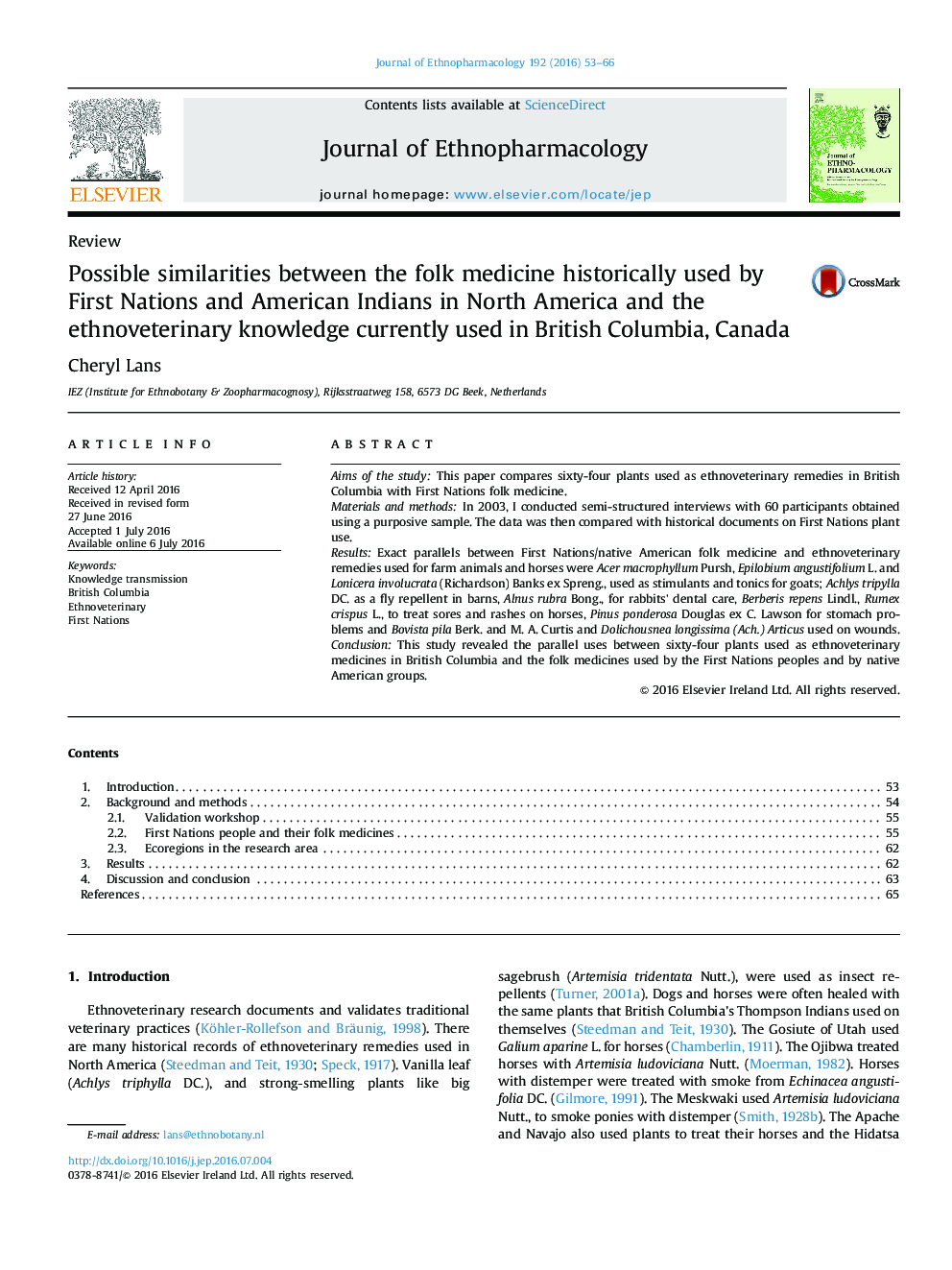| کد مقاله | کد نشریه | سال انتشار | مقاله انگلیسی | نسخه تمام متن |
|---|---|---|---|---|
| 2544528 | 1560370 | 2016 | 14 صفحه PDF | دانلود رایگان |
Aims of the studyThis paper compares sixty-four plants used as ethnoveterinary remedies in British Columbia with First Nations folk medicine.Materials and methodsIn 2003, I conducted semi-structured interviews with 60 participants obtained using a purposive sample. The data was then compared with historical documents on First Nations plant use.ResultsExact parallels between First Nations/native American folk medicine and ethnoveterinary remedies used for farm animals and horses were Acer macrophyllum Pursh, Epilobium angustifolium L. and Lonicera involucrata (Richardson) Banks ex Spreng., used as stimulants and tonics for goats; Achlys tripylla DC. as a fly repellent in barns, Alnus rubra Bong., for rabbits’ dental care, Berberis repens Lindl., Rumex crispus L., to treat sores and rashes on horses, Pinus ponderosa Douglas ex C. Lawson for stomach problems and Bovista pila Berk. and M. A. Curtis and Dolichousnea longissima (Ach.) Articus used on wounds.ConclusionThis study revealed the parallel uses between sixty-four plants used as ethnoveterinary medicines in British Columbia and the folk medicines used by the First Nations peoples and by native American groups.
Figure optionsDownload high-quality image (220 K)Download as PowerPoint slide
Journal: Journal of Ethnopharmacology - Volume 192, 4 November 2016, Pages 53–66
